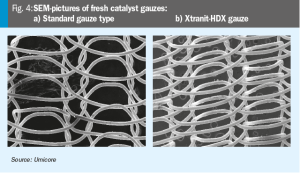
Increased efficiency through advanced gauze geometries
Umicore’s latest research and development has resulted in a novel catalyst for the Ostwald process, aiming to enhance efficiency and sustainability in high-pressure nitric acid production.

Umicore’s latest research and development has resulted in a novel catalyst for the Ostwald process, aiming to enhance efficiency and sustainability in high-pressure nitric acid production.
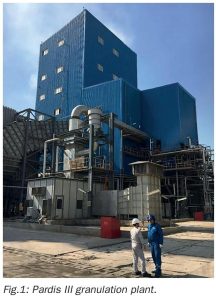
Stamicarbon has optimised urea granulation to meet rising global fertilizer demands by improving product robustness, reducing capital and operating costs through a simplified design.
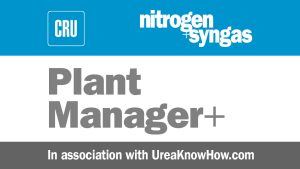
The following case study describes a serious incident and the consequences of erroneously mixing nitric acid with hydrochloric acid. In Part 1 we report on the incident and the causes that led up to the event. In part 2 the impact, recommendations and lessons learned will be discussed.
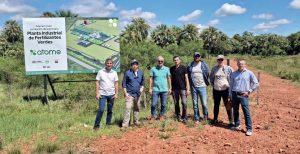
Casale’s high-performance finishing technologies combine flexibility and innovation with seamless integration and sustainability across the nitrogen fertilizer value chain. Gabriele Marcon and Ken Monstrey of Casale present the latest developments in Casale’s comprehensive portfolio of fertilizer finishing technologies and highlight recent projects.
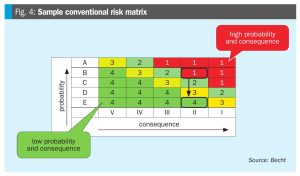
Becht’s Risk Based Work Selection (RBWS) process is a structured, data-driven method that uses risk and benefit-to-cost analysis to optimise turnaround and maintenance work in industrial facilities, resulting in significant cost savings and improved reliability.
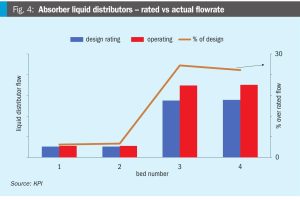
KPI describes the systematic revamp of a Benfield CO2 removal unit at a high-throughput ammonia plant, emphasising simulation-driven diagnostics and customised engineering solutions.

Johnson Matthey Plc (JM) says that it has reached an agreement to sell its Catalyst Technologies (CT) business to Honeywell International, Inc. for £1.8 billion ($2.45 billion) on a cash and debt-free basis.

Three European energy companies are planning to develop a green methanol plant in Spain that will capture around 380,000 t/a of biogenic carbon dioxide, which will be used to produce 200,000 t/a of methanol. Spanish renewable energy firm Magnon will oversee the carbon capture portion of the project, while partners Power2X and ErasmoPower2X will handle […]
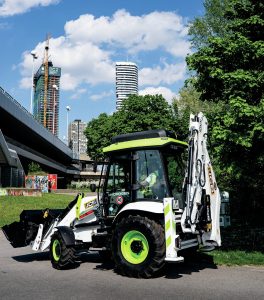
JCB says that it has passed a significant milestone on its hydrogen technology development programme after securing the first full EU type-approval of its hydrogen engine for use in non-road mobile machinery. This means that JCB’s hydrogen engine has been approved for sale and for use in machines and third-party OEM equipment in each of […]

Clariant says that its ShiftMax 100 RE catalyst is now in operation at INERATEC’s Era One e-fuels production plant in the Frankfurt Hoechst industrial park. The facility will transform around 8,000 t/a of CO2 into up to 2,500 t/a of synthetic fuels and waxes. The e-fuels produced at the INERATEC facility can be used as […]